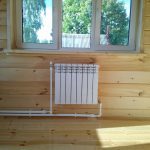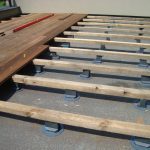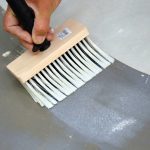Content
- 1 Why sewer pipes need to be laid at the right angle
- 2 Correct sewer slope angle
- 3 The bias turns out more - what to do?
Almost always, sewage flows freely, under the influence of gravity. Forced stock is very rare. In order for sewage to move freely and not clog pipes, they must be laid at the right angle. How to solve this problem, we will describe below.

Why sewer pipes need to be laid at the right angle
The degree of slope is indicated in SNiP. Why is everything so strict? The rate of movement of sewage through sewer pipes should be such that the liquid solids and solids move in the same stream.
By laying the sewers on their own, beginners in this matter make several gross errors:
- Install the pipe under insufficient slope. In this case, the water leaves more slowly than necessary, some sections of the pipe can quickly become clogged. Even if the drain comes from the bathroom, where there are no solid fractions, sediment and plug gradually form in the pipe. The situation is even worse if the pipe comes from the toilet - in this case, the water will be poorly washed off, the smell of decaying feces will be felt not only in the toilet, but also in other rooms;
- Too steep slope. If you go too far with a slope, the water will rapidly pass through the pipes, leaving behind particles of garbage. In addition to causing traffic jams, sewage begins to decompose, spreading a disgusting smell. The owners will have to clean the sewer every few weeks, or even more often.

Correct sewer slope angle
Angles for all diameters of sewer pipes are indicated in the construction documentation. The angle is written as a decimal fraction. For example, 0.05 or 0.07. These numbers indicate how far one end of the pipe is one meter longer than the other end. So, the number 0.05 means that one end of the pipe is 5 cm higher than the other end. Its slope angle is calculated separately for each diameter of the sewer pipe. So, for a pipe having a diameter of 3 cm, it is 5 cm per 1 meter, for a pipe 2 cm. in diameter - 11 cm per meter, for a sewer pipe 0.8 cm - 16 cm. The smaller the diameter of the sewer pipe, the steeper the slope should be.

The bias turns out more - what to do?
Sometimes it happens that there is no way to provide the desired slope angle. The problem can be solved in several ways: lay the pipe, as it happens, and hope that there will be no special problems. If the slope is too large, you should install tees after 5-6 meters and make vents to clean the clogs. The second option is to lay the pipe at the required angle as it turns out, and then make a well for the height difference. From the well, the pipe goes on at the right angle. If the sewage system is long, then one well cannot be dispensed with.

As you can see, the slope angle is of great importance, and it would be impossible to neglect such a seemingly insignificant detail.
-
 What boards can not be used for half-timbered
What boards can not be used for half-timbered
-
 Why does the grinder work, but the disk does not spin
Why does the grinder work, but the disk does not spin
-
 Features of the installation of half-timbered columns
Features of the installation of half-timbered columns
-
 How to make a rectangular cutout in ceramic tiles
How to make a rectangular cutout in ceramic tiles
-
 How to restore knife marks on a countertop
How to restore knife marks on a countertop
-
 What mistakes are made when the radiator is connected diagonally?
What mistakes are made when the radiator is connected diagonally?
-
 When an adjustable floor is more profitable than a capital screed
When an adjustable floor is more profitable than a capital screed
-
 What primers are not suitable for application under fiberboard
What primers are not suitable for application under fiberboard
-
 What installation errors lead to the leakage of the polycarbonate canopy
What installation errors lead to the leakage of the polycarbonate canopy
-
 When you need to install heating radiators not under the window
When you need to install heating radiators not under the window
-
 How to paint from spray can without smudges
How to paint from spray can without smudges
-
 How to cut glued tiles on a wall
How to cut glued tiles on a wall
New publications are published daily on our channel in Yandex. Zen
Go to Yandex. Zen


